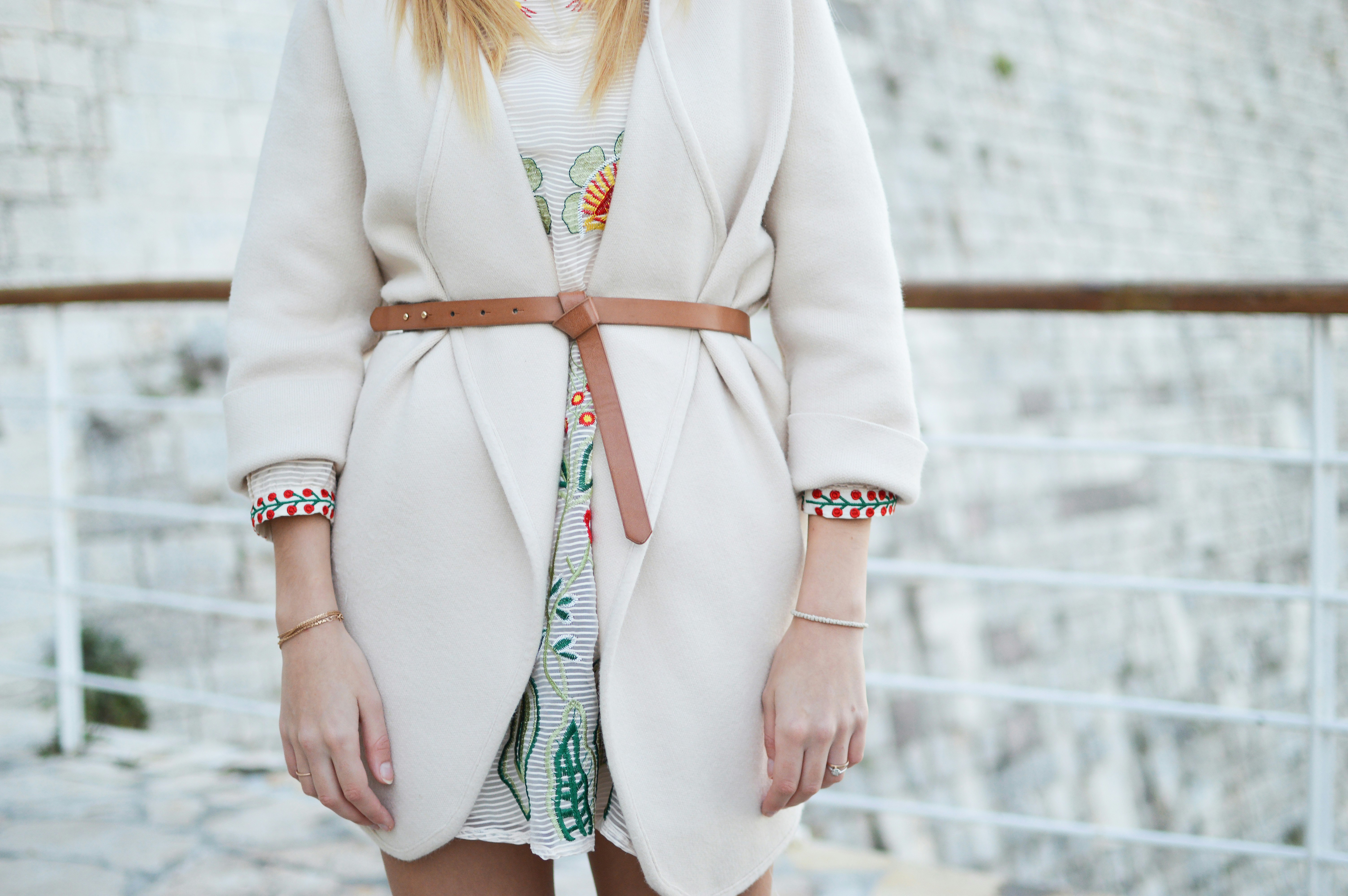The Allure of Textural Layering in Fashion
In the ever-evolving world of style, a captivating trend has emerged that's redefining how we approach our wardrobes. Textural layering, the art of combining different fabric textures in a single outfit, has taken the fashion scene by storm. This innovative approach to dressing isn't just about warmth or practicality; it's a creative expression that adds depth, interest, and sophistication to any ensemble. Let's dive into the fascinating world of textural layering and discover how this trend is reshaping the way we think about fashion.

As fashion evolved, designers began to experiment with textures not just for function, but for aesthetic appeal. The 1920s saw the rise of contrasting textures in flapper dresses, while the 1980s embraced a mix of textures in power dressing. Today, textural layering has become a sophisticated art form, blending function with high fashion.
The Psychology Behind Texture
The appeal of textural layering goes beyond mere aesthetics. Psychologists have long recognized the impact of texture on our senses and emotions. Different textures can evoke various feelings and memories, making our clothing choices a form of nonverbal communication. Soft, plush textures might convey comfort and approachability, while rough or structured textures can suggest strength and resilience.
Fashion psychologists argue that the act of combining different textures allows individuals to express complex personalities and moods. It’s a way of creating a multi-dimensional fashion statement that engages not just the eyes, but also the sense of touch, creating a more immersive style experience.
Mastering the Art of Textural Combinations
The key to successful textural layering lies in understanding how different fabrics interact. Contrasting textures create visual interest and depth. For example, pairing a chunky knit sweater with a silky slip dress creates an intriguing juxtaposition. Similarly, layering a smooth leather jacket over a fuzzy mohair sweater adds dimension to an outfit.
Designers recommend starting with a base layer of a smooth fabric, like silk or cotton, and gradually building up with increasingly textured pieces. The goal is to create a harmonious blend of textures that complement rather than compete with each other. It’s also important to consider the weight and drape of fabrics to ensure a balanced silhouette.
Seasonal Adaptations of Textural Layering
One of the most exciting aspects of textural layering is its versatility across seasons. In winter, it’s natural to think of layering chunky knits with wool coats, but summer offers its own opportunities for textural play. Light, airy fabrics like linen, cotton eyelet, and sheer chiffons can be layered to create breezy, dimension-rich outfits perfect for warmer weather.
Spring and fall, with their transitional weather, are ideal for experimenting with textural layering. These seasons allow for a mix of heavier and lighter textures, creating outfits that are both practical and stylish. A classic trench coat over a cashmere sweater and silk blouse, for instance, showcases three distinct textures while also being weather-appropriate.
The Impact on Sustainable Fashion
Interestingly, the trend of textural layering has had a positive impact on sustainable fashion. By encouraging the creative combination of different pieces, it promotes a more versatile and long-lasting wardrobe. Instead of buying new outfits for each season, consumers are learning to reimagine and recombine their existing pieces in new and exciting ways.
This approach aligns with the slow fashion movement, which emphasizes quality over quantity and encourages consumers to invest in well-made, timeless pieces. Textural layering breathes new life into old favorites, reducing the need for constant wardrobe turnover and ultimately contributing to a more sustainable approach to fashion.
The Role of Accessories in Textural Layering
Accessories play a crucial role in the art of textural layering. They offer an easy way to introduce new textures without committing to a full outfit change. A chunky knit scarf paired with a sleek leather jacket, or a beaded clutch contrasting with a matte finish dress, can add that perfect touch of textural interest.
Jewelry, too, can contribute to the layered texture effect. Mixing metals, incorporating different finishes (matte, polished, hammered), and playing with various sizes and shapes of jewelry pieces can create a rich, textured look that complements the layered fabrics of an outfit.
Expert Tips for Mastering Textural Layering
• Start with neutral colors when experimenting with multiple textures to avoid overwhelming the eye
• Pay attention to proportions – balance bulky textures with sleeker ones to maintain a flattering silhouette
• Don’t forget about patterns – they can add another layer of visual texture to your outfit
• Experiment with unexpected combinations, like pairing delicate lace with rugged denim
• Use accessories as an easy entry point into textural layering
• Consider the occasion – subtle texture play works well for professional settings, while bolder combinations shine in casual or creative environments
• Remember that textural layering extends to footwear and bags – incorporate these elements for a cohesive look
As we embrace the art of textural layering, we open up a world of creative possibilities in our wardrobes. This trend encourages us to look at our clothing with fresh eyes, finding new ways to combine pieces and express our personal style. By mastering the interplay of different textures, we can create outfits that are not just visually appealing, but also tactilely engaging, adding a new dimension to our fashion choices. As the fashion world continues to evolve, textural layering stands out as a trend that balances creativity, sustainability, and individual expression, making it a powerful tool in the modern fashionista’s arsenal.





